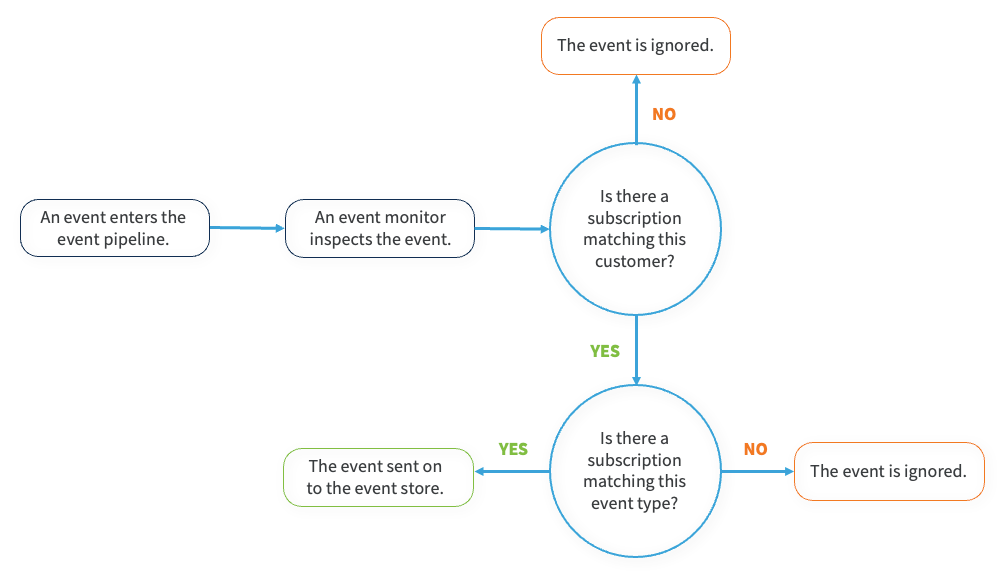Introduction to Webhooks v3
Akamai Identity Cloud Webhooks are a monitoring and alerting system that provides near real-time notifications of user profile and session activity.
Webhooks v3 monitors the following events that occur in the Identity Cloud platform:
- entityCreated. A user profile has been created in the database.
- entityDeleted. A user profile has been deleted from the database.
- entityUpdated. A data value within a user profile has changed.
To take advantage of this feature, you can create webhook subscriptions that specify which events you’re interested in. If one of your subscribed-to events occurs, Webhooks v3 pushes an event notification to your listener endpoint.
The process looks like this:

Notable features of Webhooks v3:
- Self-service management of your webhook subscriptions and event deliveries.
- Server-side event filtering.
- Automatic retry of delivery failures.
- Failed event queue and manual redelivery.
Updated almost 2 years ago
